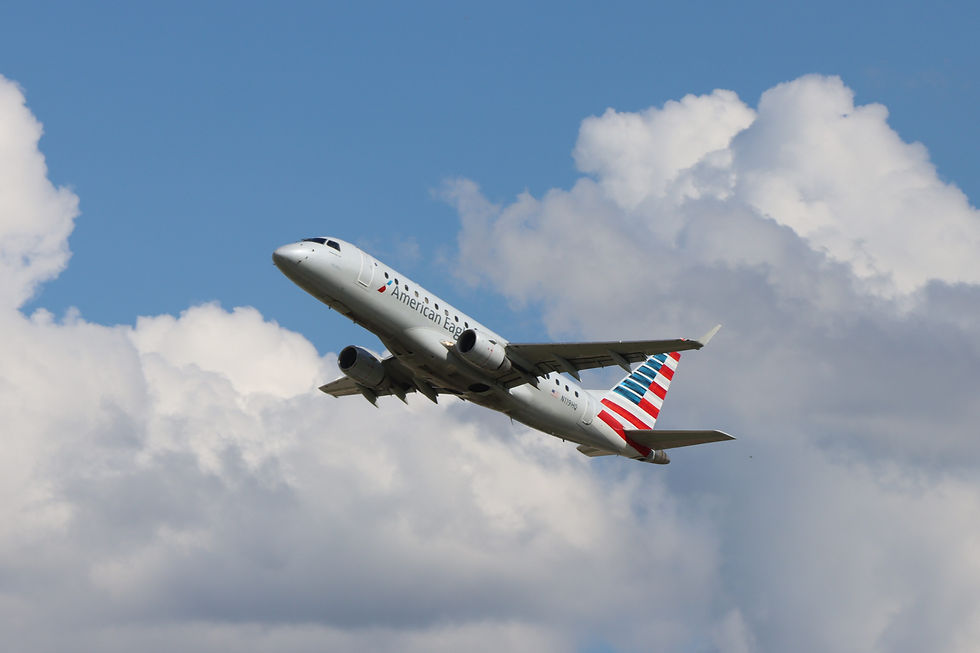Air India crash
- Av Geek Blog

- Jul 23
- 4 min read
On 12th June 2025 at 13:38 local time, an Air India 787 operating flight AI171 from Ahmedabad Airport (AMD) to London Gatwick (LGW) crashed less than a minute after takeoff. This crash marks the first fatal crash of a Boeing 787 Dreamliner in its 14 years of passenger service. In this blog post, I take a look at what we know so far about the accident and the aftermath of this crash.
Please note that at the time of writing, information is subject to change. Please check with up to date sources for the latest information.

On 12th June 2025 an Air India aircraft crashed after taking off from Ahmedabad, India (AMD) . The flight was destined for London Gatwick (LGW) where it was scheduled to land at 18:25. Flight AI171 was operated by a Boeing 787-8 Dreamliner with registration VT-ANB. The aircraft was 11 years old, being manufactured in December 2013.
The plane took off from runway 23 at 13:38 local time. Weather conditions were stable and clear at the time of the crash with light surface winds and visibility was 6km. Data shows that the last signal from the Air India plane was less than a minute after takeoff at 08:08:51 UTC (13:38 local time). This data indicated that the aircraft was at an altitude of 625 feet. Video of the crash circulating online shows that the aircraft appeared to struggle to climb after taking off. Videos also show that the landing gear was not retracted (usually the landing gear is retracted a few seconds after take off). This video footage has led people to speculate about possible loss of engine power in both engines or an incorrect flap setting. Reports also say that the crew issued a mayday call before crashing. The airplane crashed into a residential area. Of the 242 passengers and crew on board, there is only one confirmed survivor.

As a result of the crash, Ahmedabad airport halted flights although they resumed later that day. This crash is the first crash of a Dreamliner aircraft since the type entered service in 2011. The 787 has carried out more than 5 million journeys since its first passenger flights and there are over 1,000 Dreamliner's in service around the world.
The flight was carrying 242 passengers comprised of 230 passengers and 12 crew (2 pilots and 10 cabin crew). Reportedly, the Captain had 8,200 hours of flying experience while the co pilot had 1,100 hours of flying experience. Unfortunately there is only one survivor from the plane, a man sitting in seat 11A. The other 241 people on board the flight were killed. A total death toll from this accident has not been released at the time of writing as a number of people on the ground have been killed or seriously injured when the plane crashed into a building meaning that the total death toll will likely increase above the 241 already confirmed.
The aircraft was an 11 year old Boeing 787-8 manufactured in December 2013. The aircraft had registration VT-ANB. Flight data shows that the aircraft regularly flew between India and destinations such as Paris, Tokyo, Frankfurt, Amsterdam and Melbourne.
The Preliminary Report
Since the accident, a preliminary report has been released. The report states that seconds after takeoff, both of the Dreamliner's fuel-control switches abruptly moved to the "cut-off" position. This action starved the engines of fuel and triggered total power loss. Seconds later, the switches were returned to their normal inflight position which triggered automatic engine relight. At the time of the crash, one engine was regaining thrust while the other engine had relit but had not recovered power. The cockpit voice recorder records one pilot asking the other why he "did the cut-off" to which the other pilot responds that he didn't. At the time of takeoff, the co-pilot was the pilot flying and the captain was the pilot monitoring. Investigators say that the lever-lock fuel switches are designed to prevent accidental activation. The switches must be pulled up to unlock before they can be flipped. Additionally, protective guard brackets further shield the switches from accidental bumps.

The report also confirmed that the aircraft's Ram Air Turbine (RAT) had deployed. The RAT is a small propellor that extends from the underside of the Dreamliner. It acts as an emergency backup generator. It automatically deploys in flight when both engines lose power or if all three hydraulic systems register critically low pressure, supplying limited power to keep essential flight systems operational. This is a clear indication of a major systems failure. Additionally, investigators say that the landing gear was in the down position.
Now that investigators have a good idea about why the aircraft crashed, they will still be keen to learn why the fuel switches were flipped in the first place.
Please remember that this information is subject to change.
Thank you for reading this blog post. Share your thoughts in the comments below, in a group discussion or on our social media.
Instagram: avgeek_blog
X: avgeek_blog
Email: geekofairlines@gmail.com
Published: 23 July 2025



Comments